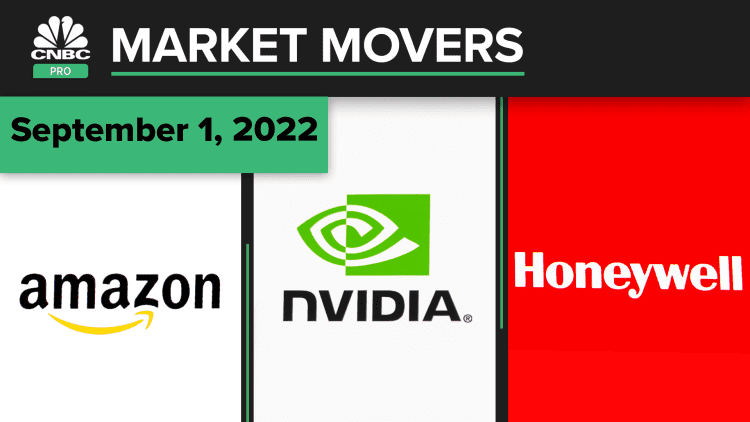
The Dow Jones Industrial Average and the S&P 500 ended the first day of September on a high note as traders looked forward to the jobs report Friday.
The Dow cut its losses from earlier in the day, wrestling with the flat line into the close and jumping 145.99 points, or nearly 0.5%, in the final minutes of trading, to 31,656.42. The S&P 500 rallied 0.3% to 3,966.85, after trading lower for most of the day. Both snapped a four-day losing streak.
Meanwhile, the Nasdaq Composite fell about 0.3%, to 11,785.13, to post its first five-day losing streak since February. It still came back from deeper losses earlier in the session.
All of the major averages are on track to finish the week lower. The Dow is set to post a 1.9% decline, while the S&P and Nasdaq are on pace to end down 2.2% and 2.9%, respectively.
Loading chart...
The moves came as the 2-year U.S. Treasury yield topped 3.5%, the highest level since November 2007, on Thursday. That weighed on rate-sensitive growth stocks, making their future profits less attractive.
Nvidia shares also contributed to the losses, falling nearly 7.7% a day after the chipmaker said the U.S. government is restricting some sales in China.
Stocks have been in a slump as investors respond to hawkish comments from Fed officials who show no signs of easing up on interest rate hikes. Traders have been debating whether stocks will again challenge the June lows in September, a historically poor month for markets.
"The June lows are in play in the coming weeks as equity investors finally recognize the intensity of the Fed's mission," said John Lynch, chief investment officer at Comerica Wealth Management. "Inflation and recession are typically accompanied by lower market multiples and markets need to reassess valuation as interest rates rise."
"A successful test of June lows may also prove important as the double-bottom formation could help alleviate fears of further volatility in the months ahead," Lynch added. "We believe consensus profit forecasts for next year are too high and technical support will be necessary as forecasts come down."

